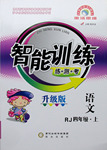题目内容

Long ago, people lived on wild animals, fruits and other plants and they didn’t need to use money.
As time passed, families had more products(产品) than they needed, such as animals and crops. So they needed to trade(交易) with others. They began to use money to make it easier. However, it was not like the money we use today. They used shells, rice, salt or large stones.
During the 600s BC, people began using coins as money. Because they were easier to carry than goods(货物), countries began to make coins as their money.
The Chinese were the first to use paper money, probably in the 11th century. An Italian traveler, Marco Polo, saw the Chinese use paper money when he visited China in the 1200s. After his travel, he told the western people what he saw. But European countries didn’t start using paper money till the1600s.
Today we have many ways to pay for things, such as coins, paper money and cards. Some prefer to pay by card. That’s because paying with a card is easier and safer than carrying around a lot of “real” money.
【小题1】People began to use money because they ______.
A. lived on plants B. raised animals C. needed to trade
【小题2】People used ______ as money during the 600s BC.
A. shells B. coins C. cards
【小题3】Which country used paper money first?
A. Japan. B. USA. C. China.
【小题4】The passage tells us the ______ of money
A. history B. use C. collection
【小题1】C
【小题2】B
【小题3】C
【小题4】A
解析【小题1】根据第二段第二句So they needed to trade(交易) with others.可知。
【小题2】根据第三段的During the 600s BC, people began using coins as money可知。
【小题3】根据第四段第一句The Chinese were the first to use paper money可知。
【小题4】从古代的shells, rice, salt or large stones.到coins,再到paper money,到最后的cards,谈论的都是money的历史。

 智能训练练测考系列答案
智能训练练测考系列答案The peanut is a native South American plant. Scientists believe that it grew wild in Brazil long ago. They think that for several thousand years the early peoples of South America made it a part of their diet. These peoples were nomads who moved on when a natural food could no longer be found in one area. Along the way they probably let fall some peanuts, which got into the ground and grew. This is believed to be the way the plant reached the place where the Incas(印加人)lived. The Incas, from about 1100 to 1532, thought highly of peanuts. The peanuts were eaten in several forms and used as sacrificial offerings(祭品)to the Incan Sun God. Later in the 16th century, European soldiers had brought peanuts to other parts of the world, including North America, Africa, Asia, Europe, and Pacific Islands.
Although peanuts were found native in South America, they are now grown in almost every country that has warm weather. India produces the most peanuts. China’s production is next, followed by the United States.
The peanut is special in more ways than one. It can be eaten raw, boiled, roasted, or fried. Hundreds of widely different products have been made from it. Carver, an American scientist, set himself the task of discovering new uses for eating and for many other products.
Peanuts are very highly nutritious and are also high in protein (蛋白质). Americans use about seven-tenths of their protein in the form of meat. In India, where the poor can’t pay for meat or milk, peanut meal and peanut milk have been produced. These have been a great help to the poor.
New products are continually being made from peanuts, among them peanut cheese and a powder that becomes peanut butter when water is added. The fact is that peanuts are so healthy that they were used by astronauts. The unusual nut that isn’t a nut is one of nature’s most amazing gifts.
【小题1】 Although we like eating peanuts, many of us don’t know peanuts belong to _______ family.
| A.the pea | B.the nut | C.both the pea and the nut | D.neither the pea nor the nut |
| A.Paragraph Four | B.Paragraph Three |
| C.Paragraph Two | D.Paragraph One |
| A.Helpful for staying healthy. | B.Helpful to the poor. |
| C.Delicious and tasty. | D.Rich in fat and oil. |
| A.Nomads always stayed in the same place. |
| B.The peanut was first found in South America. |
| C.Astronauts ate lots of peanuts to keep healthy. |
| D.China grows fewer peanuts than the US. |
| A.To show that peanuts belong to the pea family. |
| B.To advise us to use more peanut products. |
| C.To tell us some new uses of peanuts. |
| D.To let us know more about peanuts. |
